
Furuno issues fixes for VDR cyber vulnerability
JANUARY 7, 2016 — Furuno issued a notice to customers this week saying that potential vulnerability to cyber attack had been found in its Voyage Data Recorder (VDR) products. Subsequently, it says,

JANUARY 7, 2016 — Furuno issued a notice to customers this week saying that potential vulnerability to cyber attack had been found in its Voyage Data Recorder (VDR) products. Subsequently, it says,
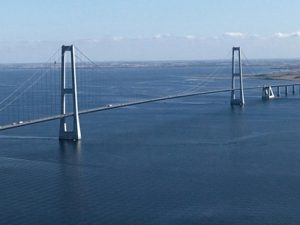
JANUARY 6, 2016 — The Danish Environmental Protection Agency and the Danish Maritime Authority have published an action plan for 2016 aimed at strengthening enforcement of regulations on ships’ sulfur emissions in
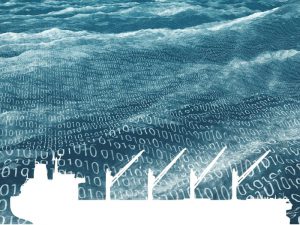
JANUARY 4, 2016 — Information technology (IT) and operational technology (OT) onboard ships are increasingly being networked together – and more frequently connected to the worldwide web, increasing the risk of unauthorized
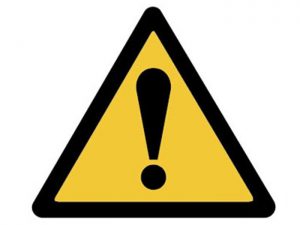
DECEMBER 30, 2015 — The U.S. Coast Guard has issued a safety alert reminding recreational boaters and commercial vessel operators to use caution when operating their vessels near areas where dredging operations
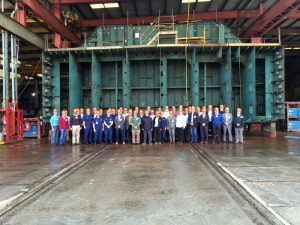
The barge is under construction at Conrad Shipyard in Orange, TX, which has just hosted a tour where 200 participants at a USCG Liquefied Gas Senior Executive Forum got a chance to see its progress.
Hull construction of the 2,200 m3 barge is near complete and abrasive blasting and painting is scheduled to begin in the coming weeks.
The barge’s LNG Mark III Flex cargo containment system, designed by Gaztransport & Technigaz (GTT), is scheduled to be installed immediately following the February launch.
The Bristol Harbor Group designed and ABS classed vessel will be outfitted with a 20 m bunker mast (custom fabricated by Conrad under GTT license) that will enable the barge to service a wide variety of vessels. It will also be equipped with six DH Industries StirLNG-4 cryocoolers sized to handle 125% of the vessel’s boil-off gas, along with other systems specifically designed for this vessel’s LNG bunkering application to deliver the coldest LNG to the end user.
The barge will be delivered to Jacksonville, FL in the third quarter of 2016 to service TOTE’s newbuild Marlin class LNG fueled container vessels and other LNG fueled vessels in and around the Port of Jacksonville and the Southeast.
CME is partnered with WesPac Midstream LLC (WesPac) and together with Pivotal LNG (Pivotal), a subsidiary of AGL Resources, will own and operate JAX LNG, a small scale liquefaction facility in the port of Jacksonville. The plant is planned to be commissioned during the first quarter of 2017 and will be capable of providing LNG to locations up and down the Florida and Georgia coasts.

Norway’s Optimarin, which claims to be on the brink of full USCG approval of its UV based system, says the decision is good news.
The Coast Guard has told UV system manufacturers that it will not accept the Most Probable Number (MPN) testing method in its approval process. The MPN methodology evaluates organisms on the basis of “viable/unviable,” with most UV systems depositing “unviable” organisms back into the water – meaning they are still alive but cannot reproduce.
The USCG says that FDA/CMFDA test, which judges life forms as “living/dead,” must be the standard for approval.
Optimarin says that having systems with USCG approval is imperative for any shipowner wanting to discharge ballast in U.S. waters after January 1,2016.
“This is a clear indication to the industry that USCG wants absolute certainty with regard to standards – they do not want living organisms deposited in their territory,” comments Tore Andersen, Optimarin’s CEO. “MPN is acceptable for IMO, but that won’t be any consolation to shipowners with global fleets that want the flexibility of sailing in and out of U.S. waters.”
Mr. Andersen notes that while the USCG is currently accepting vessels with approved Alternate Management Systems (AMS) based on testing by another flag state, can discharge ballast in that approval is good for only five years after the vessel’s compliance date.
“At that point, if they haven’t met the USCG’s own ‘instant kill’ standard, they will have to be changed,” says Mr. Andersen. “That’s a burden of potential cost and uncertainty that shipowners operating in today’s tight market shouldn’t have to contend with.”
He says that Optimarin, which has over 20 years of industry experience and installed the world’s first commercial BWT system in 2000, is the only UV manufacturer that is currently within “touching distance” of USCG approval.
Its technology successfully satisfying the FDA/CFMDA criteria during testing this year. Further tests in other water salinities are scheduled for spring 2016, after which point approval is expected later in the year.
Mr. Andersen says the system’s power is the key to its efficacy.
“Each of our system lamps has a 35 kW capacity, which is huge for a UV system. That power instantly kills invasive organisms and that’s exactly what USCG wants to see,” he says.
Optimarin has now sold over 350 of its systems to shipowners across the world, with more than 270 installed, over 60 of which are retrofits.
One major client of the business is Saga Shipholding. Optimarin signed a frame agreement with the open hatch bulk shipper in 2011 and has since gone on to install 26 systems, including eight newbuild installations, on a fleet that currently numbers 32 vessels. The remainder will receive their BWT units during 2016.
Eivind Holte, Senior Technical Manager Saga Shipholding (Norway), notes that Saga’s ships are frequent visitors to the U.S., servicing ports on both the West and East Coasts.
“I can’t overstate the importance of USCG approval to us,” he stresses, “it’s basically a ‘ticket to trade.’ We’re very happy that we chose Optimarin, for both their system’s technology and its compliance, with full USCG approval on the horizon.”
AMS accepted units, he says, present a “real risk.”
“They’re compliant now, but will they be in five years time? The cost of changing existing systems across a fleet to ensure compliance would be disastrous, just disastrous,” says Mr. Holte.
“Making the right choice for BWT systems is crucial,” he says. “Shipowners have to choose systems and suppliers they trust. We did, and that decision, now more than ever, looks to be completely correct.”
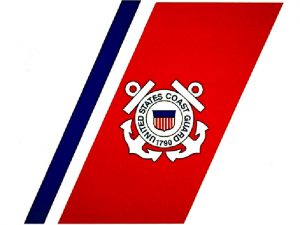
The Coast Guard’s Marine Safety Center has informed four manufacturers of ballast water management systems (BWMS) that are based on ultraviolet technology that the Most Probable Number (MPN) test method is not considered an equivalent alternative to the test method prescribed in the Coast Guard regulations on type approval of ballast water systems.
A Coast Guard review has concluded that the MPN test method does not measure the efficacy of the BWMS to the performance standard required by the regulations.
The regulations specifically require ballast water treatment systems to be evaluated based on their ability to kill certain organisms. Since the MPN method assesses the viability of an organism to colonize after treatment, it measures to a different standard than that required by the regulations.
In the Preamble to the Final Rule which implemented the ballast water discharge standard and the procedures for BWMS type-approval, the distinction between live/dead and viable/unviable was evaluated, explicitly discussed and the decision was made to use live/dead as the standard for evaluating the performance of BWMS. Since the MPN method does not measure performance to this standard, it is not an equivalent evaluation or test under the provisions of the regulations.
The Coast Guard says it is aware of other ultraviolet BWMS that are undergoing evaluation using the prescribed tests. As such, the tests required by the regulations and the Environmental Protection Agency’s Environmental Technology Verification, or ETV, Protocol are applicable and practicable for the evaluation of all systems.
As with all decisions made under the authority of Title 46 of the Code of Federal Regulations, this Marine Safety Center ruling is subject to appeal by the manufacturers. The Coast Guard will continue to evaluate this method through the ETV Technical Panel.

Although the convention has yet to enter into force, ClassNK says that the two facilities — Shree Ram Vessel Scrap Pvt. Ltd and Leela Ship Recycling Pvt. Ltd — have both carried out substantial improvements in a bid toward achieving safer and greener ship recycling and have developed the Ship Recycling Facility Plans (SRFPs) required for a competent authority’s certification under the convention.
In addition to conducting on-site inspections before issuing the SoC, ClassNK reviewed the SRFPs prepared by Shree Ram and Leela, which comply with requirements of the HKC, and confirmed that their ship recycling processes follow their respective SRFPs
The SoC are issued based on purely technical verifications of the facilities by ClassNK, which has so far done the same for ship recycling facilities around the world.
ClassNK says it will continue encouraging safe and environmentally sound ship recycling in accordance with the HKC through its issuance of SoC to facilities that meet the HKC standards.

IMO notes that, to date, it is the only organization to have adopted energy-efficiency measures that are legally binding across an entire global industry and apply to all countries. Mandatory energy efficiency standards for new ships, and mandatory operational measures to reduce emissions from existing ships, entered into force under an existing international convention (MARPOL Annex VI) in 2013. By 2025, all new ships will be 30% more energy efficient than those built last year.
“This is more than a target, it is a legal requirement, and demonstrates that IMO is the correct and only forum to identify solutions and an appropriate pathway for international shipping to de-carbonize with the rest of the globe,” says IMO.
Continuing efforts will include:
During COP21, IMO provided an update of its work to address GHG emissions from bunker fuels used for international shipping.
Specifically, IMO reported on its work on guidelines to support the uniform implementation of the regulations on energy-efficiency for ships; and on its efforts with regard to technical co-operation and capacity-building to ensure effective implementation and enforcement of the new regulations worldwide and, activities to support technical cooperation and transfer of technology for improving the energy efficiency of ships.
With what is now “a clear imperative for IMO’s Member States to rise to the challenge set by the Paris Agreement,” Secretary-General Sekimizu says, “I now encourage Governments to bring the spirit of the Paris Agreement to IMO and come forward with new, creative proposals and to approach them in a constructive and cooperative manner.”
Mr. Sekimizu says that the challenge set by the Paris Agreement also extends to ship designers and marine engineers to develop the technological solutions, to those who operate and manage ships, to seafarers and those who educate them and, importantly, to the business of shipping, which needs to ensure that investment in innovative low carbon technologies is properly incentivised.
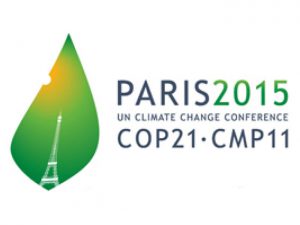
Be that as it may, the International Chamber of Shipping (ICS) says it “greatly welcomes” the agreement and that “the shipping industry remains committed to ambitious CO2 emission reduction across the entire world merchant fleet, reducing CO2 per tonne-km by at least 50% before 2050 compared to 2007.”
Despite the absence of an explicit reference to shipping, ICS says that the message from the world’s governments is clear.
“I am sure IMO Member States will now proceed with new momentum to help the industry deliver ever greater CO2 reductions, as the world moves towards total decarbonization by the end of the century” said ICS Secretary General, Peter Hinchliffe.
ICS will engage meaningfully in discussions at IMO, expected to begin in earnest at a critical meeting in April 2016, about the possibility of agreeing a CO2 reduction target for shipping. ICS is also pushing for IMO to finalize a global CO2 data collection system for ships, which ICS would like to see mandatory as soon as possible, prior to IMO deciding on the necessity of additional actions such as a developing a Market Based Measure.
ICS says that dramatic CO2 reductions from shipping will only be guaranteed if further regulation continues to be led by IMO.
ICS notes that, as a result of the Paris Agreement, developing nations such as China and India have accepted responsibility to curb their emissions alongside developed economies, however, the agreement retains the principle of “differentiation” that allows different parties to offer different levels of commitment to reducing CO2.
“CO2 is a global problem and shipping is a global industry” said Peter Hinchliffe. “IMO is the only forum which can take account of the UN principle of ‘differentiation’ while requiring all ships to apply the same CO2 reduction measures, regardless of their flag state. Unilateral or regional regulation would be disastrous for shipping and disastrous for global CO2 reduction, whereas IMO is already helping shipping to deliver substantial CO2 reductions on a global basis.”
ICS says that the complexity and scale of the Paris Agreement means that many of those involved may be disappointed by certain aspects, including the absence of explicit text referring to international shipping. At the start of the negotiation, ICS had hoped there might have been an acknowledgment of the importance of IMO continuing to develop further CO2 reduction measures, applicable to all internationally trading ships, and implemented and enforced in a uniform and global manner.
“Time finally ran out to agree a compromise on international transport acceptable to all nations, but nothing is really lost. No text is probably preferable to some of the well intentioned words being proposed at the very end of the conference which few people understood and which could have actually greatly complicated further progress at IMO” said Mr. Hinchliffe. “The Member States at IMO are the same nations that were present in Paris, but with officials that have a deep level of maritime expertise. Intensive work at IMO will continue with the global shipping industry’s full support.”
The European Community Shipowners Association also welcomed the agreement.
“Following the adoption in 2011 of measures to increase the energy efficiency of the industry, the agreed next step is a global data collection system of CO2 emissions”, said Patrick Verhoeven, Secretary General of ECSA, “The governments in IMO will resume discussions on such a system in April next year, with the aim of ascertaining the real contribution of international shipping to global CO2 emissions. We strongly encourage all parties to ensure that these discussions lead to the establishment, as soon as possible, of a mandatory data collection system.”
Once the data collection system is in place, the IMO will be able to decide on steps ahead.
“Together with our partners in the International Chamber of Shipping, we are ready to positively contribute to this process” said Mr. Verhoeven. “We hope that the European Parliament as well as civil society will join us in supporting Member States and the Commission to seek a global partnership in the IMO, as no regional solution could ever guarantee global emission reductions nor a global level playing field for shipping. The EU has adopted regulation that is meant to facilitate and precipitate a global solution for CO2 emissions from ships. It is now time to translate these commitments into a global agreement.”